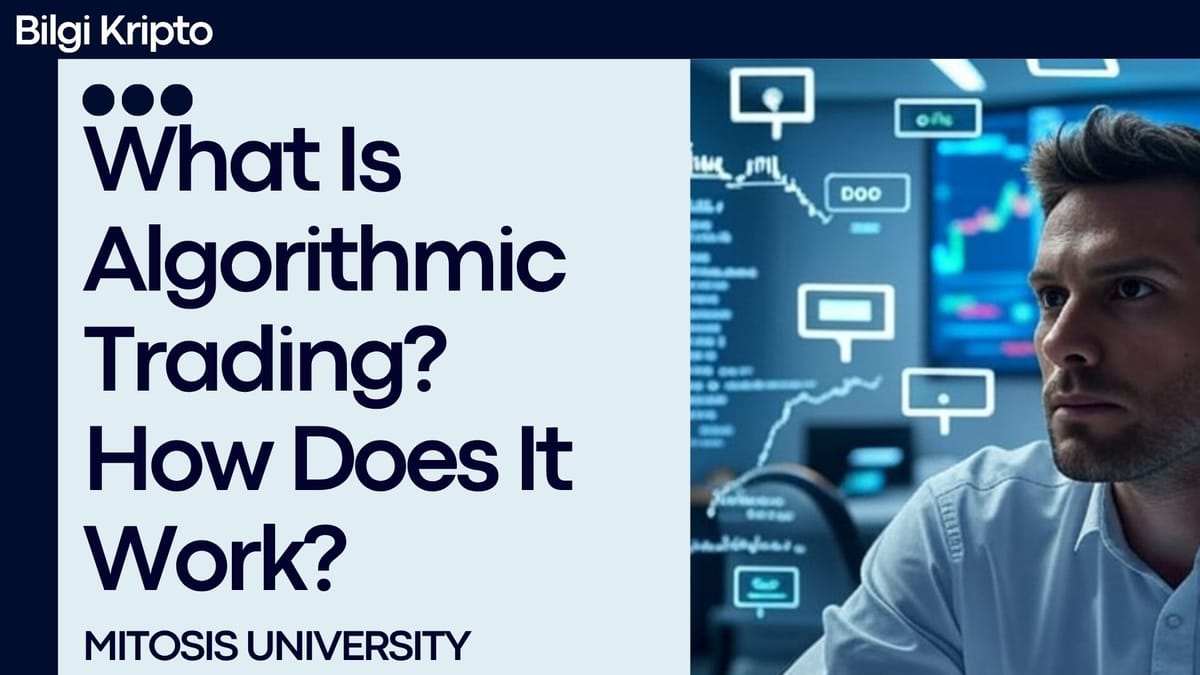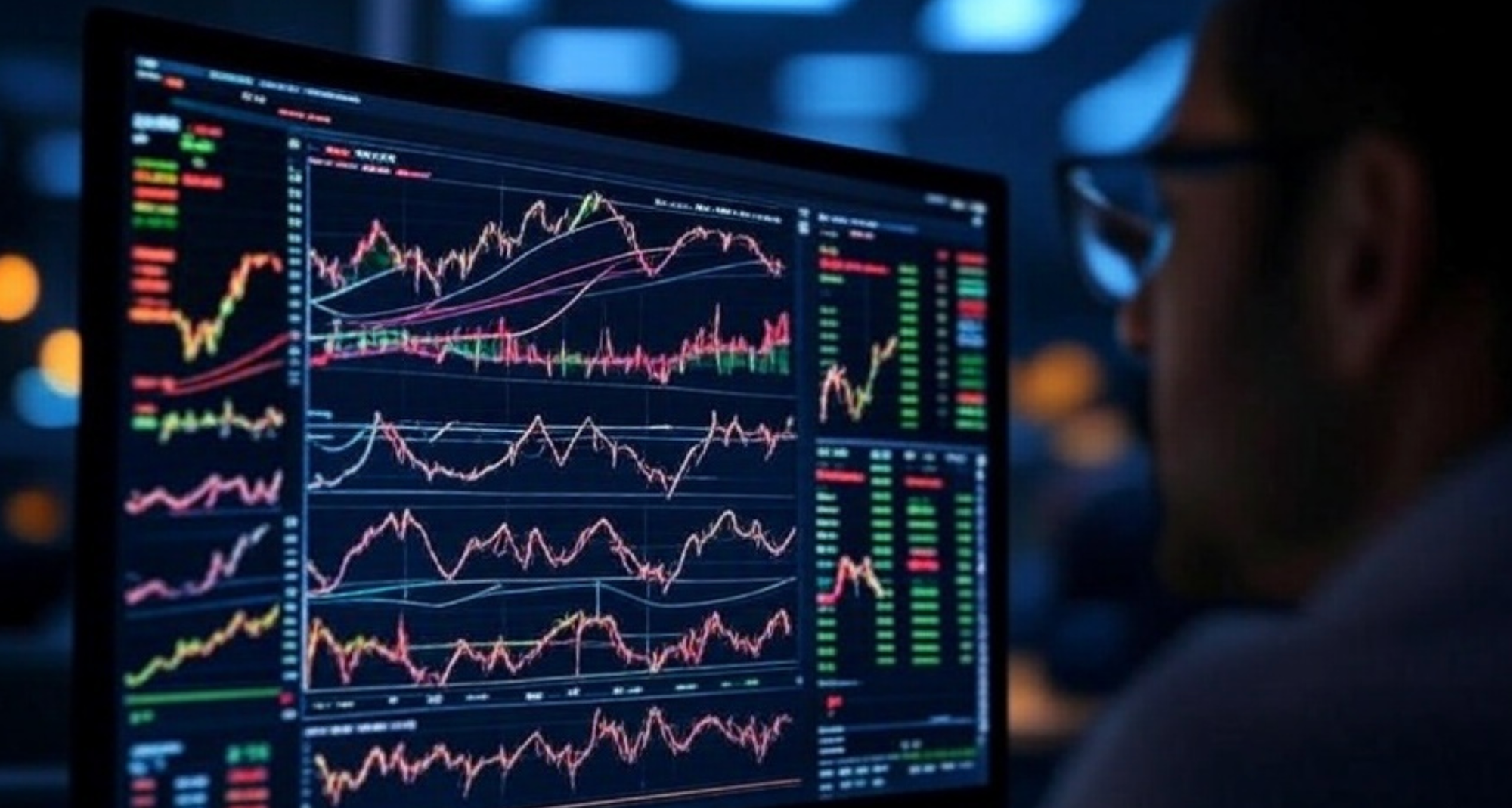What Is Algorithmic Trading? How Does It Work? Strategies, Advantages, and Risks

Financial markets are becoming faster, more complex, and increasingly competitive. This transformation is pushing investors away from traditional manual trading methods toward more systematic and automated solutions. In this context, algorithmic trading (also known as algo trading) has become a powerful tool.
In this article, we explore in detail what algorithmic trading is, how it works, the strategies used, its advantages and disadvantages. We’ve also made the system more understandable with real-life examples.
What Is Algorithmic Trading?
Algorithmic trading is the buying and selling of financial instruments such as stocks, cryptocurrencies, currencies, and derivatives through computer algorithms that operate under predefined rules without human intervention.
These algorithms analyze price movements, trading volume, technical indicators, and timing criteria to make instant decisions and automatically execute trades.

A Real-Life Example
Imagine you are an investor. You go to work in the morning and won’t be able to monitor the markets. But you want to buy Bitcoin if its price drops by 4%. This is where algorithmic trading comes into play. Based on the rules you’ve set, the algorithm detects this drop, sends the order, and completes the purchase automatically. You don’t need to watch the screen or analyze charts manually.
How Does Algorithmic Trading Work?
1. Defining the Strategy
First, the investor must develop a strategy based on specific rules. This strategy can be based on price changes, moving averages, indicators, or time intervals.
Example: “Buy when the price falls below the 50-day moving average, sell when it rises above.”
2. Programming the Algorithm
The strategy is turned into a computer algorithm using a programming language. Python is the most commonly preferred language for this purpose. At this stage, the logic of the algorithm is coded.
3. Backtesting
The written algorithm is tested on historical market data to check how efficiently it performs.
Example: An algorithm applied to Bitcoin price data from 2022 can help analyze whether the investor would have made a profit or loss that year.
4. Live Trading
After successful testing, the algorithm is integrated into the live market. Using API connections, the algorithm starts executing trades directly through an exchange.
5. Continuous Monitoring and Updating
Once the algorithm is running, its performance is monitored regularly. As market conditions change, the algorithm can be adjusted accordingly.
Where Is Algorithmic Trading Used?
- Investment Funds and Institutional Investors: Used to execute large-scale transactions with low cost and high speed.
- Retail Investors: Suitable for individuals who want to make systematic investments based on specific strategies.
- Crypto Traders: In 24/7 open crypto markets, the difficulty of manual trading is overcome with algorithms.
- HFT (High-Frequency Trading) Firms: Companies that aim to profit from millisecond advantages make intensive use of algorithms.

Successful Algorithmic Strategies
- VWAP (Volume Weighted Average Price)
This method executes large orders by splitting them into smaller ones that are close to the average market price. - TWAP (Time Weighted Average Price)
Spreads orders over specific time intervals. It is generally preferred when market volatility is low. - POV (Percent of Volume)
Aims to execute trades based on a certain percentage of the market volume. It minimizes the market impact of orders.
A Real Strategy Example
Let’s say an investor wants to buy an asset when the RSI (Relative Strength Index) drops below 30 and sell it when it goes above 70. This strategy can be written in Python with just a few lines of code, and the system will automatically follow and execute the trades.
Advantages of Algorithmic Trading
- Speed and Efficiency
While a manual trader can execute a few trades per second, an algorithm can perform hundreds in the same timeframe. - Emotionless Trading
Algorithms are not affected by emotions like greed, fear, or panic. This leads to more rational trade outcomes. - Backtesting Capability
Investors can test their strategies on historical data to predict potential success rates in advance. - 24/7 Monitoring
Especially in crypto markets, algorithms work around the clock without missing any trading opportunities.
Risks of Algorithmic Trading
- Technical Errors
Software bugs, network issues, or API outages can cause serious losses. - Over-Optimization
If a strategy is too optimized based on historical data, it may not perform well in future market conditions. - Development Complexity
Since it requires both financial and coding knowledge, the learning curve can be steep for beginners.
Tips for Beginners
- Start with Small Budgets: Use small capital for initial experiments and practice in demo environments.
- Do Backtesting: Always test your algorithm on historical data before going live.
- Keep It Simple: Start with basic strategies using indicators like RSI or MACD.
- Use Open Source: You can find many example algorithms on platforms like GitHub.
Conclusion: Is the Future of Trading in Automation?
Algorithmic trading is a technological and systematic approach that is increasingly attracting the attention of investors. High speed, low error rate, and emotion-free trades make this method attractive, while technical knowledge requirements and system failure risks should not be overlooked.
If you want to tie your investment decisions to specific rules and automate them, algorithmic trading could be a great opportunity for you. However, to achieve success, you must understand your system well, test it thoroughly, and continuously improve it



Comments ()